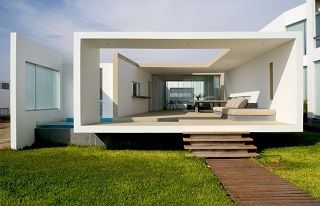From Guest Blogger Addison: What is Green Architecture?

Smaller spaces
Most large homes use a large amount of electricity, and for this reason large homes are expensive to maintain. Many people prefer small homes because they use less electricity, and building materials. Of course, this isn’t always possible, but even in large buildings that use green architecture techniques space is saved where it can be.
Sun power
Homes that supplement their energy from the use of solar panels use less electricity than ones that don’t. Solar panels can store energy and use the energy later when it is cloudy outside. The unused energy can also be used at night. Homeowners and business owners who purchase solar panels might be eligible for tax rebates as well.
Water protection
When making green homes or buildings, the use of water conservation is essential. Showers, sinks and toilets should all use the least amount of water, and low-flow toilets are often used. Plants should be watered with recycled water. Some Eco-friendly homes use rain water in toilets and showers.
The advantages of green architecture
There are several advantages to green architecture. The biggest advantage is optimizing the use of natural resources. Using more natural resources saves the planet. Green architecture also reduces operating cost. The occupants of the building also breathe in cleaner air.
Natural building materials
Natural based building materials are durable. Straw, wood and other natural materials can last for several years and withstand the elements. These building materials can be used on the inside and outside of home. They are great for insulation, and they do not contain harmful chemicals.
Waste management
Another critical part of green architecture planning is waste management. The advocates of green construction projects require construction companies to build an Eco-friendly method of disposing waste. Composting is one green method of waste management. This is also done to protect the health of the buildings occupants.
Rating system
The LEED Green Building Rating System is an organization for green architects. The program uses outside parties to verify buildings meet the requirements for being a green building. The organization makes sure commercial buildings meet their regulations. The organization has four levels of certification. Buildings receive a label based on how many points they gain. Platinum is the highest level. The other three levels are gold, silver and certified.
It is now easier than ever to live a green lifestyle. You can live in sync with your surroundings, and reduce your negative impact on the environment. Choosing to go green doesn’t always require architectural design- you can choose to go green by using less energy and water today. Doing this will reduce your carbon footprint and make the world a cleaner place for future generations. However, if you are planning on constructing a new building, make your next building project a green building. Green architecture is the future of construction, and the techniques in practice now will only continue to be improved and sophisticated as time goes on, helping the environment and saving people money on their construction and utility costs. Contact a green architect today to get started building your next green home or commercial building. It will be the best home or office buying decision you ever make.
Addison Appleby is an IT Specialist and technology writer from Tucson, Arizona. She enjoys writing about sustainability, web design, and science.

As we know that today we are facing pollution problem worldwide and I think we can reduce it with the green architecture because in it we use natural resources. Using more natural resources saves the planet. Green architecture also reduces operating cost. The occupants of the building also breathe in cleaner air